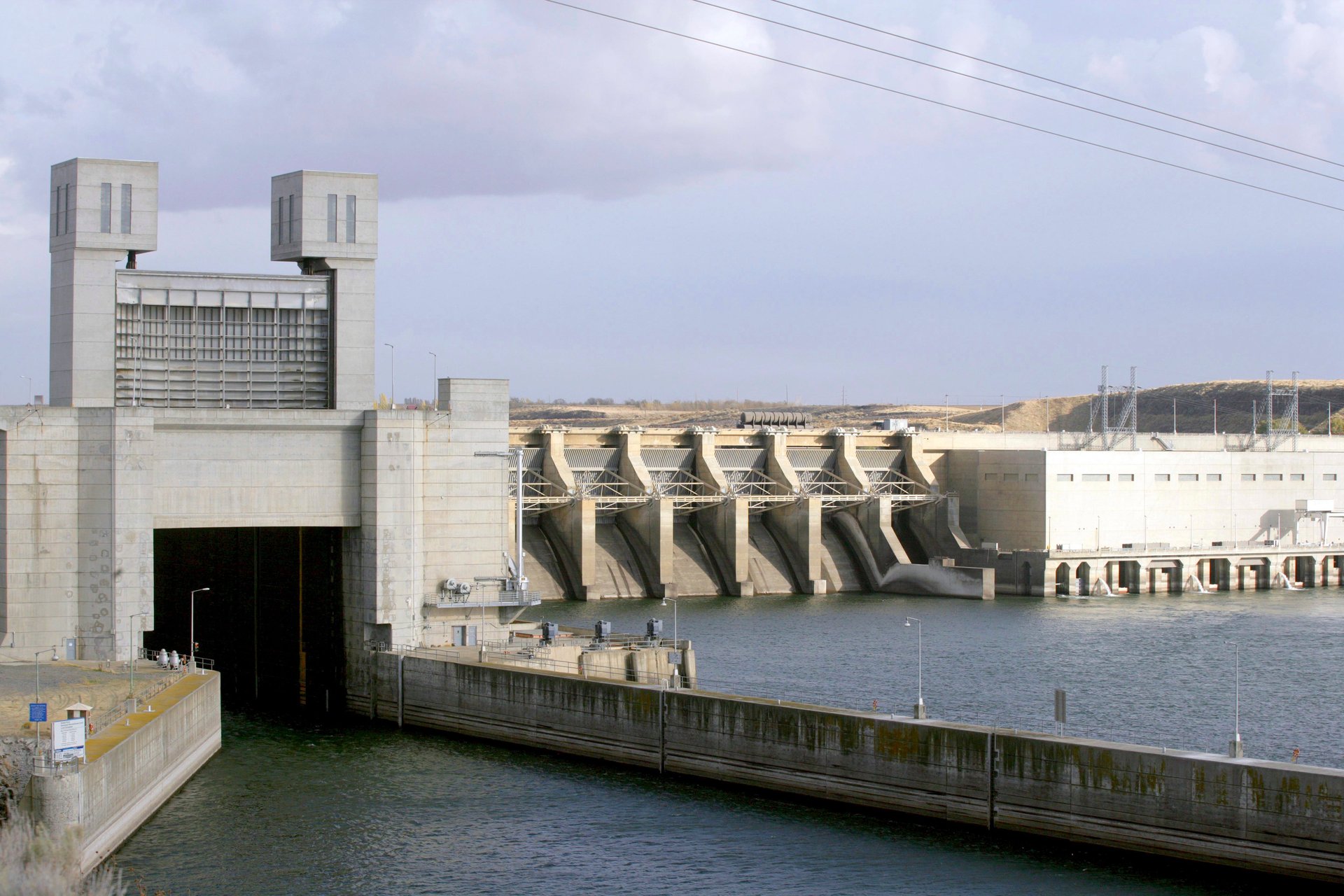Biden memo directs US agencies to restore 'healthy and abundant' salmon runs in the Northwest
President Joe Biden has directed federal agencies to use all available authorities and resources to restore “healthy and abundant” salmon runs in the Columbia River Basin, a move that conservationists and tribes call a potential breakthrough

WASHINGTON (AP) — In a move that conservationists and tribes called a potential breakthrough, President Joe Biden has directed federal agencies to use all available authorities and resources to restore “healthy and abundant” salmon runs in the Columbia River Basin.
Suggested Reading
Biden's order stops short of calling for removal of four hydroelectric dams on the Lower Snake River in Washington state, an action that tribes and conservation groups have long urged to save threatened fish populations. But it directs a host of federal agencies to do all they can to restore salmon and honor U.S. treaty obligations with Pacific Northwest tribes.
Related Content
“Wild salmon, steelhead and other native fish populations in the Columbia River Basin are essential to the culture, economy, religion and way of life of tribal nations and indigenous peoples,'' Biden said in the six-page presidential memo released last week.
Actions since 1855, including the federal government’s construction and operation of dams, have changed the basin's ecosystem and “severely depleted fish populations,″ the memo says. While once there were up to 10 million salmon a year returning to the Columbia and Snake rivers, returns now are a small fraction of that, despite billions of dollars spent by federal, tribal and state governments and a wide range of stakeholders, the memo says. Thirteen salmon and steelhead species are listed as threatened or endangered.
“It is time for a sustained national effort to restore healthy and abundant native fish populations in the (Columbia River) Basin,″ Biden’s order said.
The order comes as a deadline approaches on a longstanding federal lawsuit over operations of hydroelectric dams on the Columbia and Snake rivers. A stay of litigation on the dispute expires at the end of the month.
Amanda Goodin, a lawyer for the environmental group Earthjustice, said the White House memo “signals that the Biden administration is ready to do a whole lot more than previous administrations have done to get us to salmon populations that support tribes and the ecosystem and recreational fisheries.″ Earthjustice is a plaintiff in years-long litigation over salmon recovery.
Achieving healthy and abundant salmon runs “is a much higher bar than merely avoiding extinction,'' Goodin said in an interview.
Shannon Wheeler, chairman of the Nez Perce Tribe, called the memo “a step in the right direction for actions that need to happen” to restore salmon and steelhead runs in the Northwest. The Nez Perce is also part of the federal litigation and has long sought removal of the Lower Snake River dams.
Biden “is saying he is going to honor treaty rights and salmon recovery,'' Wheeler said, calling the president's commitment to tribal rights crucial and a recognition of past injustices.
Still the memo does not recommend breaching the dams in Eastern Washington, a politically volatile step that could raise electric rates for millions of customers in the Northwest who rely on hydropower. Breaching the dams, which requires approval from Congress, would cost between $10.3 billion and $27.2 billion, according to a report last year by Washington Gov. Jay Inslee and Sen. Patty Murray, D-Wash.
Kurt Miller, executive director of Northwest RiverPartners, which represents community-owned electric utilities in seven western states, said dam-breaching could cause rate increases of 25% to 65% for 4 million public power customers in Washington, Oregon, Idaho, Montana and other states.
“A huge rate shock would be devastating for the region,'' Miller said, calling the dams “a lifeline to many communities.” Rural areas in particular rely on hydropower supplied by the Bonneville Power Administration, a federal agency that provides power to Washington, Oregon, Idaho, Montana and parts of four other states.
“There are so many reasons why getting rid of dams doesn't make sense for the Northwest,'' Miller said, including significant improvements in recent years in fish passages in the four Lower Snake River dams. Dams also provide climate-friendly power with no greenhouse gas emissions and help transport wheat and other grains that are exported to Japan and other Asian countries.
While dam-breaching has long been debated, only a few Northwest lawmakers have embraced the idea, including Republican Rep. Mike Simpson of Idaho and Democratic Rep. Earl Blumenauer of Oregon. A plan by Simpson calls for spending $33 billion to breach the dams, replace the lost hydroelectric energy with other sources and ensure that irrigation, river navigation and flood control will continue as before.
In their report last year, Inslee and Murray said the Lower Snake River dams should not be decommissioned or breached until "replacement and mitigation of their benefits'' are ensured, including “reliable, dispatchable and carbon-free energy'' from renewable sources such as wind and solar power. The veteran Democrats rejected the idea that either “energy scarcity” or “environmental calamity” is inevitable in a new approach to hydropower.
Murray, the longest-serving senator in the Northwest, said the White House memo shows Biden is serious about salmon recovery and tribal treaty rights “while meeting the region’s resiliency needs.″
As chair of the Senate Appropriations Committee, Murray vowed to "fight for the strongest possible investments to save our salmon.”
Rep. Dan Newhouse, R-Wash., blasted the memo as a thinly disguised effort to drum up support to breach the dams. “The sad truth is, this has not been a collaborative process all along, and they are only seeking to accomplish one predetermined outcome: a breach of the four Lower Snake River Dams,” Newhouse said in a statement.
The memo comes after the Biden administration pledged over $200 million for salmon recovery in the Upper Columbia River Basin in an agreement with tribes that includes a stay on litigation for 20 years. The agreement is separate from negotiations on the Snake River dams.